Contents:
When you think of American coins, one face often comes to mind: Abraham Lincoln. The beloved president led the country through its darkest days and is synonymous with the penny. But what about the nickel? Whose head is on the nickel, and more importantly, what metal is a nickel made of?
What Is a Nickel Coin Made Of?
The first question many people ask is, "Are nickels made of nickel in fact?" Today’s answer is: partly. Modern 5-cent coins are made from an alloy of 75% copper and 25% nickel – a composition that has been standard since 1946.
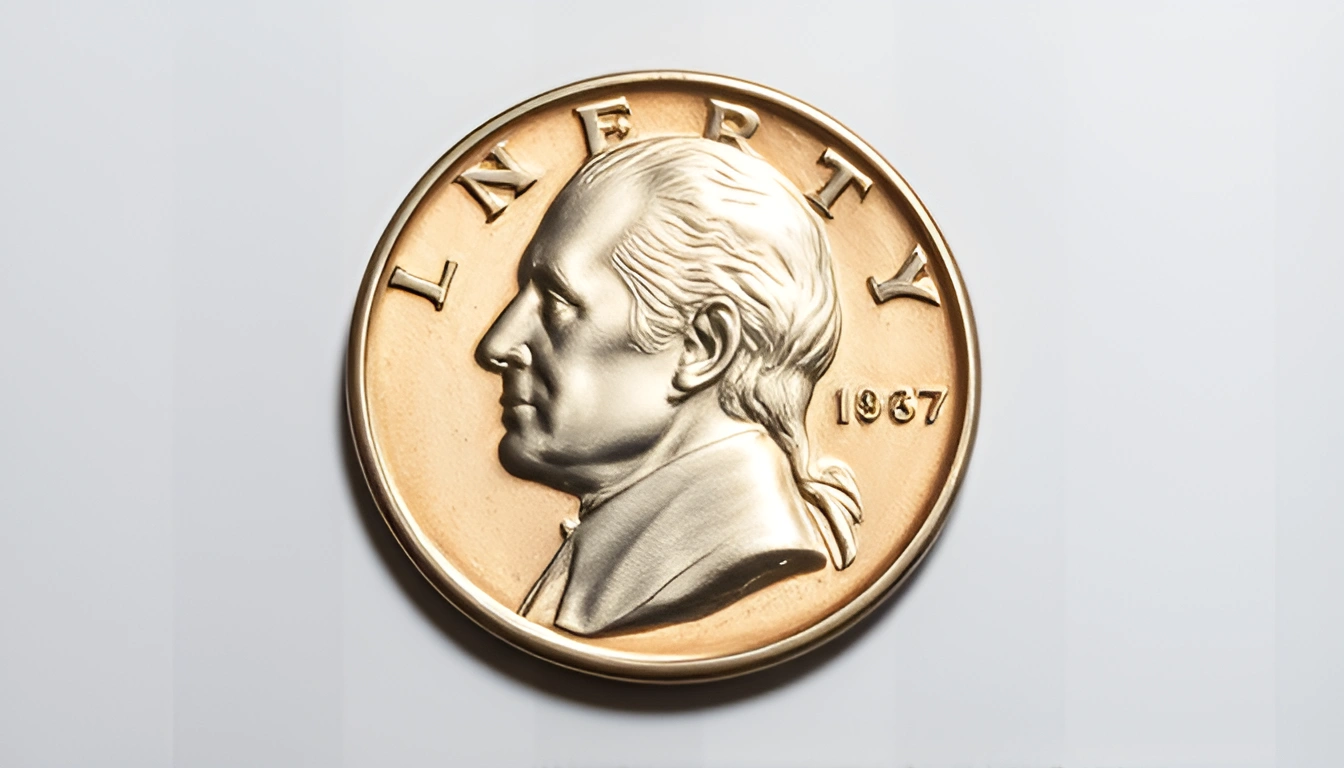
During the Civil War (1861-1865), the United States experienced a severe shortage of precious metals like gold and silver. As a result, the government started using less valuable metals for coins. The first nickels were introduced in 1866 and were initially called "nickel-copper five-cent pieces" because they consisted of 75% copper and 25% nickel. This formula was designed to create a durable yet affordable coin that could survive everyday use and address the material shortages of the time.
But when did the 5C change its metal composition? When World War II came. Between 1942 and 1945, the United States needed nickel for military purposes, particularly for making armor plating. To meet this demand, the Mint temporarily changed the composition, replacing the nickel content with 35% silver, 56% copper, and 9% manganese. Do nickels have silver in them now? No; once the war ended, the Mint resumed its pre-war composition of nickel and copper.
By the way, if you want to know more about ancient coins, you can start with Tetradrachm coins from Greece.
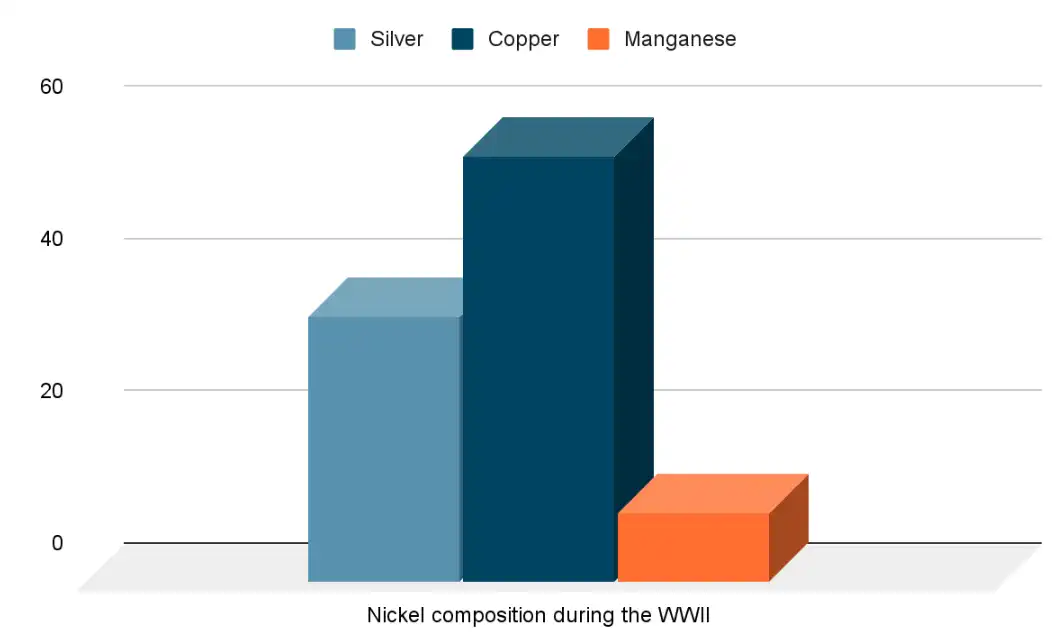
Coin Design and Jefferson’s Role in History
While Lincoln is an easy answer for people who are wondering about the penny, the nickel honors various figures, with Thomas Jefferson being one of the most notable. His face has been featured on the nickel since 1938, a decision made to mark the 200th anniversary of his birth. Before Jefferson, the nickel carried the image of a Native American chief (the buffalo design), minted from 1913 to 1938.
Jefferson's placement on this coin wasn’t just a random choice. His image represents his strong influence on American democracy, especially his role in expanding the United States. The decision to replace the buffalo design with Jefferson came at a time when the U.S. Mint began shifting its focus toward honoring historical figures, rather than just symbols like eagles and Lady Liberty.
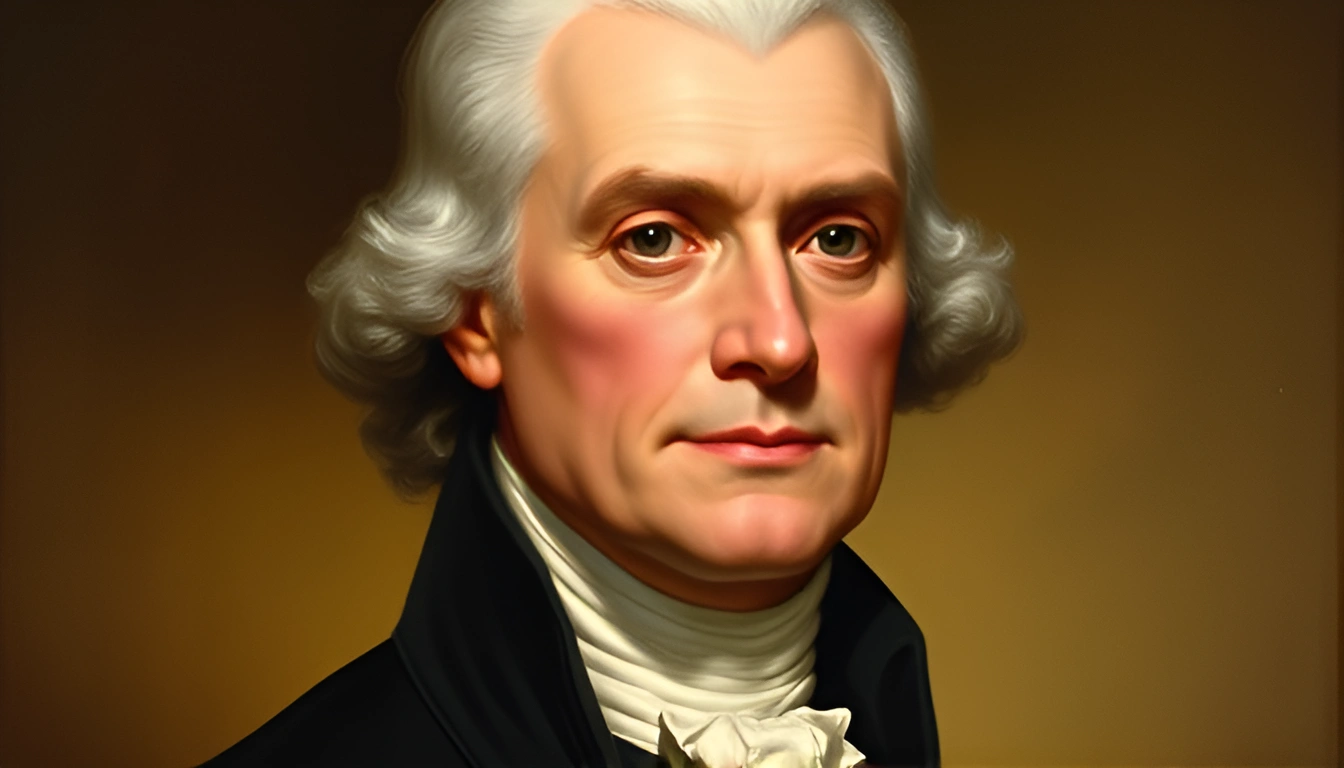
What Is on the Back of a Nickel Coin? Monticello’s Significance
If you flip the nickel over, you’ll find an image of Monticello, Jefferson’s famed estate in Virginia. Jefferson designed Monticello himself: his ideals of architecture, agriculture, and Enlightenment philosophy.
This Monticello design has been featured on the back of the nickel since Jefferson first appeared on the coin in 1938. However, from 2004 to 2005, the Mint released a special series of nickels to commemorate the 200th anniversary of the Lewis and Clark Expedition. These included the image of a bison (a nod to the original buffalo nickel) and an ocean view. By 2006, though, Monticello returned to its prominent place.
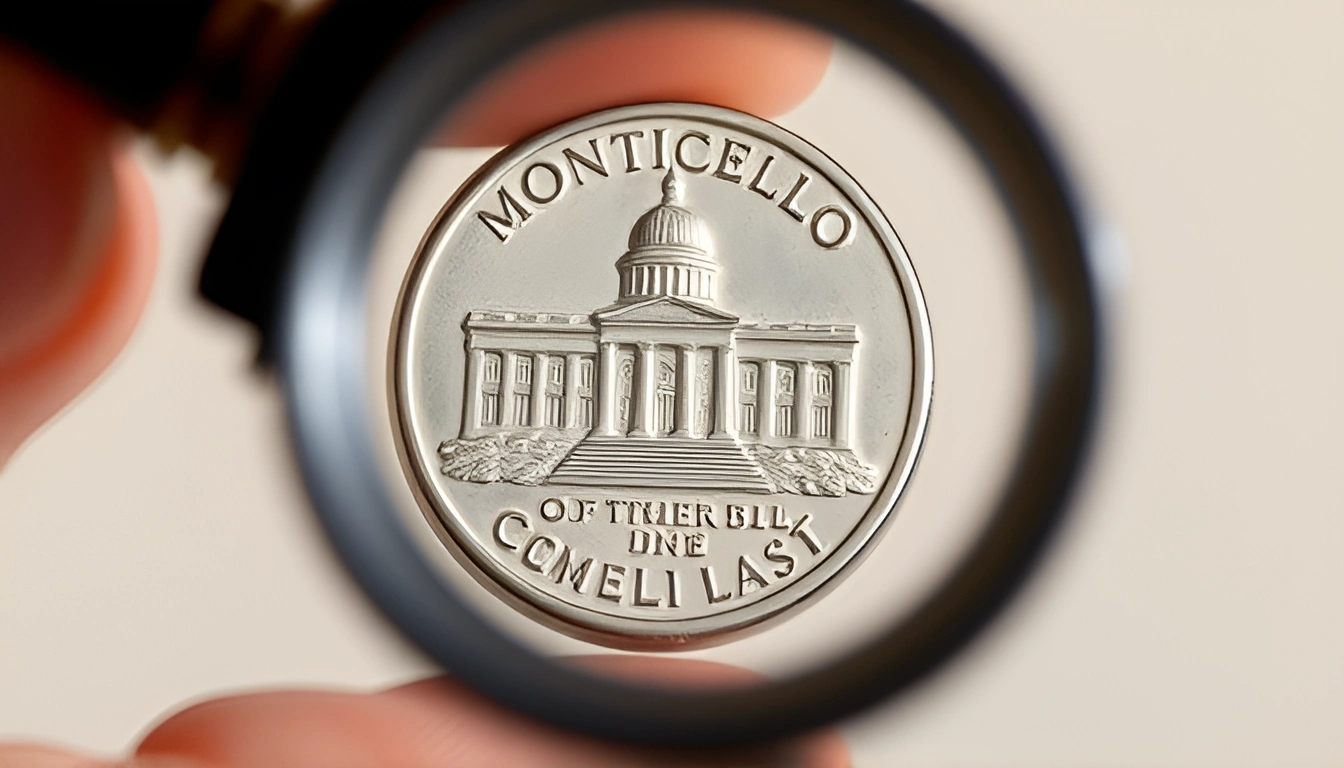
The Penny vs. The Nickel: Why Is Lincoln on the Penny?
The choice to place Lincoln on the penny in 1909 was rather symbolic. That year marked the 100th anniversary of Lincoln’s birth, and the country wanted to honor him in a significant way. At the time, most U.S. units featured allegorical figures like Lady Liberty rather than real historical figures, and Lincoln became the first actual person to appear on circulating American currency.
Why is Lincoln on the penny, and not the nickel? There was a strong historical and cultural reasoning behind this choice. Pennies were often associated with the working class and the common man, both of which Lincoln championed during his presidency. His placement on the penny signified his role as "the people’s president."
The profile of Lincoln is one of the most enduring and recognized in American history. Interestingly, when Lincoln was placed on the penny, it marked a turning point in American coinage. This led to more presidents and key figures appearing on coins in later years, e.g., Jefferson on the nickel in 1938.
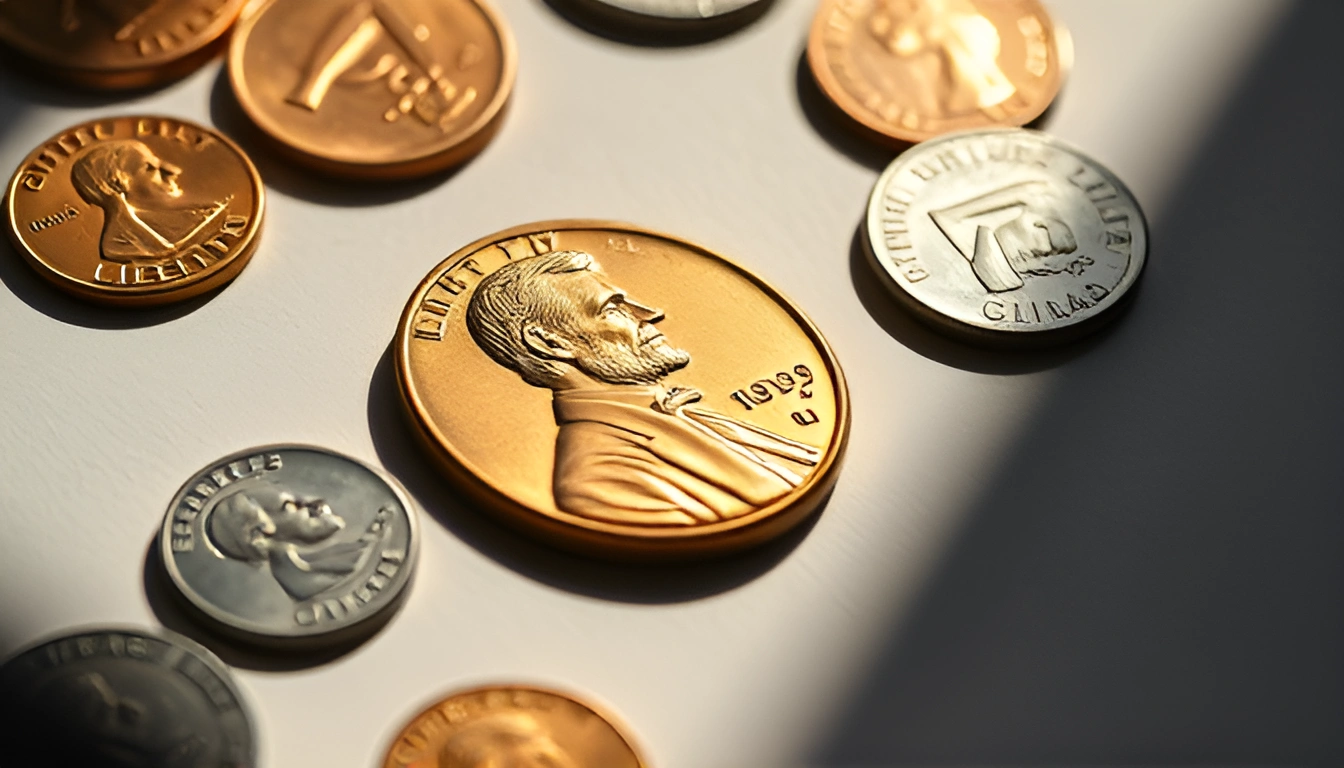
A Little Bit About Mint Nickels
“Mint nickels" refer to freshly struck U.S. five-cent units of currency that have been produced by the U.S. Mint but have not yet entered circulation. These are typically in pristine, uncirculated condition, often collected by numismatists for their quality and rarity. However, we recommend that you grade your coins with a PCGS coin lookup free of charge, or the NGC grading services to understand which exact coin you have.
Uncirculated 5C: These are mint-condition instances straight from the mint, which haven’t gone through the wear and tear of circulation. Collectors value them for their lack of blemishes or scratches.
Proof 5C: These are specially produced mint nickels with a high-quality, mirror-like finish.
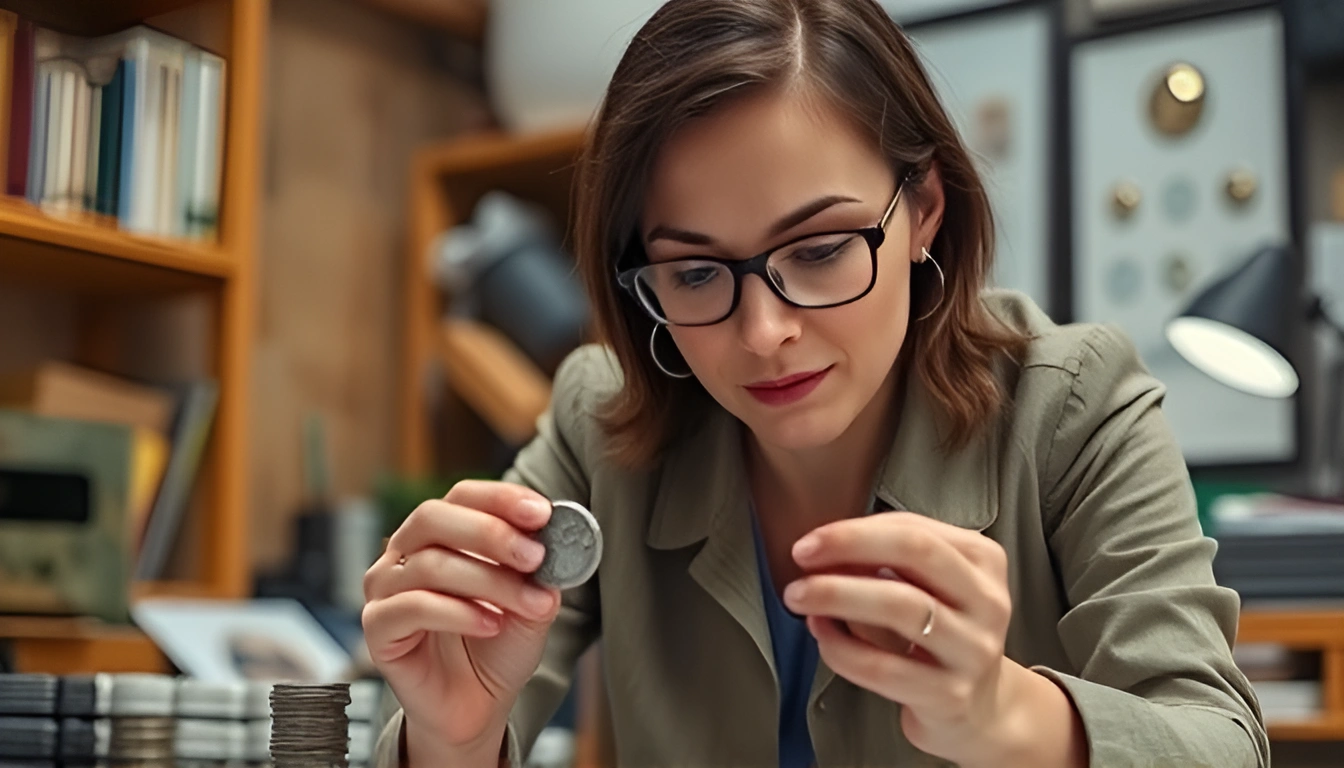
Mint Sets: These are collections of uncirculated instances from the U.S. Mint, including nickels, from various minting facilities (such as Philadelphia, Denver, and San Francisco).
Mint Marks: Mint nickels often have a small letter indicating where they were produced, such as:
"P" for Philadelphia
"D" for Denver
"S" for San Francisco

Coin Faces Names: Lincoln, Jefferson, and Other Famous Titles
Both Lincoln on a penny and Jefferson on a nickel represent pillars of American leadership. Here’s a quick recap and its continuation with two other famous American coins and not less famous faces on them:
Lincoln on the penny, where he has been featured since 1909, in honor of his 100th birthday.
Jefferson on the nickel, a decision made in 1938 to mark his influence on American democracy.
Monticello, Jefferson’s estate, has been the primary design on the back of the nickel, except for a brief hiatus during the Lewis and Clark bicentennial commemorations in 2004-2005.
Franklin D. Roosevelt on the dime. He has been honored on the dime since 1946, following his passing in 1945. The dime was chosen to honor his founding of the March of Dimes, a campaign to combat polio, a disease he himself battled.

Washington on the quarter. The quarter features George Washington, the nation's first president, since 1932, commemorating the 200th anniversary of his birth. Washington’s image symbolizes his role as the “Father of the Nation” and his leadership in the fight for American independence.
Our Tip: If you are still unsure, try a coin search by picture. It will tell you what kind of coin you have.
A Historical Look at the U.S. Coinage
As you can see, the story behind who was on the nickel is intertwined with American history. Thomas Jefferson’s lasting legacy and the power of Abraham Lincoln on the penny - each coin reflects the nation’s values and memories.
A nickel, like every other American coin, is a piece of the country’s great history. Remember: Lincoln is on the penny, Jefferson is on the nickel, and the stories of both men continue to shape the way we think about leadership, democracy, and the currency we use every day.



